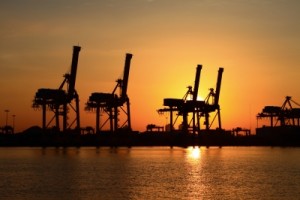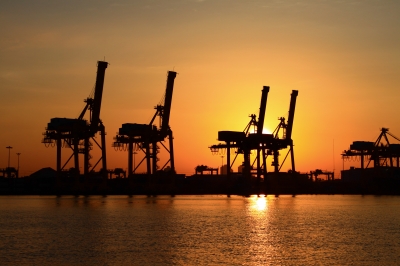 Philippine merchandise imports grew 16.8% in October to $6.527 billion from $5.589 billion in the same month last year and 8.2% over the September 2015 figure, according to the Philippine Statistics Authority.
Philippine merchandise imports grew 16.8% in October to $6.527 billion from $5.589 billion in the same month last year and 8.2% over the September 2015 figure, according to the Philippine Statistics Authority.
The growth was backed by higher imports of raw materials and intermediate goods (40.1%), capital goods (25.4%) and consumer goods (4.1%).
The Philippines outpaced its Asian peers as other economies registered declines in imports. Vietnam, which posted positive growth in the previous months along with the Philippines, was down by 1.8% in October this year.
“The continuing resurgence of imports is a healthy indication of robust investment demand as it continues to be driven by intermediate and capital goods. The anticipated recovery of the global economy, and brisk election spending will continue to drive imports to double-digit growth,” said Economic Planning Secretary Arsenio M. Balisacan in a press statement.
Import payments for raw materials and intermediate goods, which accounted for 42.8% of the country’s total merchandise imports, increased by $2.8 billion in October 2015.
The value of imported capital goods, representing 32.3% of the total, grew to $2.1 billion. Imports of capital goods have been expanding at double-digit rates since March 2015, which bodes well for overall investments growth in 2015, said Balisacan.
“Increasing appetite for capital goods and manufactured goods, such as materials accounting for the manufacture of electrical equipment, signifies an upbeat business sector. This demonstrates the overall business confidence growth of 51.3% recorded in the fourth quarter this year from 41.4% in the previous quarter, as reported by the Bangko Sentral ng Pilipinas. This is the highest we had in the last two years,” noted Balisacan who is also director-general of the National Economic and Development Authority.
Import bill for consumer goods increased by 4.1% to $1.1 billion in October 2015, while the total import payments for mineral fuels and lubricants declined by 38.5% to $524.8 million in October 2015, mostly due to volume purchases and price decline of petroleum crude.
“On the back of a weak global environment, the strong growth in shipments of capital goods and consumer goods points to a resilient domestic economy. Supportive policies for a thriving business sector should be continued. These include lowering the cost of and reducing the time for starting a business, reducing red tape and transaction costs, and supporting innovation and technological improvements, among others,” Balisacan said.
Image courtesy of joesive47 at FreeDigitalPhotos.net





